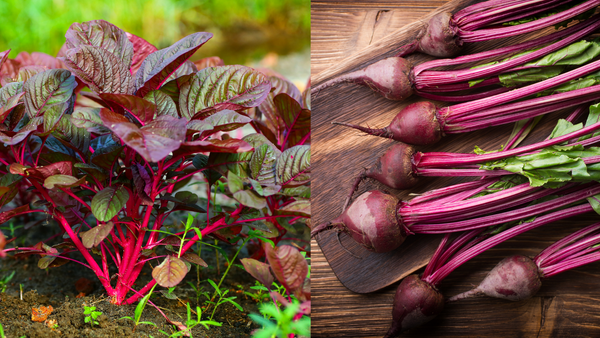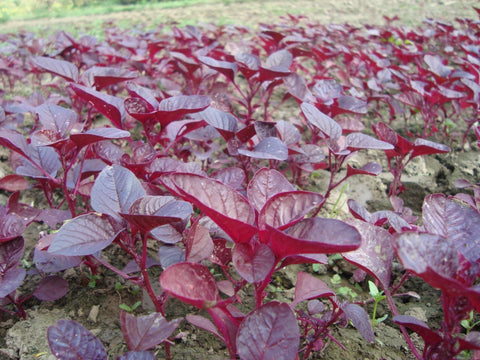What Is Inhaled Nitric Oxide?
Nitric oxide is a naturally occurring gas that is produced in the body in various ways. Inhaled nitric oxide comes specifically from simply breathing in through the nose, where nitric oxide is produced. Sometimes one can boost nitric oxide with machines that deliver increased nitric oxide for patients in clinical settings.
How does inhaled nitric oxide work?
Our paranasal sinuses are continually producing nitric oxide, so much so that researchers at one point thought it was a nitric oxide reservoir. The paranasal sinuses include four air-filled spaces that are around the nasal cavity. Their constant production of nitric oxide has incited much research. Scientists are still trying to fully understand the mechanisms at play in the paranasal sinuses that produce nitric oxide and the many implications breathing alone has on health.
When we inhale through our nostrils, the nitric oxide produced in our nasal cavity makes its way to our lungs and bloodstream, improving oxygen transportation—making nitric oxide a vital component of breathing and getting air into our lungs. Nose breathing helps increase nitric oxide levels, which causes bronchodilation, the widening and relacing of bronchi in the lungs. Sound familiar? Nitric oxide is also a vasodilator, helping the veins and arteries relax and expand.
Mouth breathing doesn’t have quite the same effect. When we mouth breath, we only get trace amounts of nitric oxide from the paranasal sinuses, scraps really. The differences can be felt immediately when comparing mouth vs. nose breathing. In fact, a study published by the Department of Otorhinolaryngology Malmö University Hospital Malmö, Sweden, linked mouth breathing to depleted nitric oxide levels and reduced antiviral response by the body. The study says that in order to support the virus-fighting characteristics of nitric oxide, it must be circulated properly throughout the body, and that starts in the nasal cavity with deep nose breaths.
Boost nitric oxide 15x by humming
Can we hum our way to health? Oscillated airflow created by humming speeds up air exchange between the nasal cavity and the sinuses. Humming acceleration of nitric oxide travel was shown to boost nasal nitric oxide levels 15 times more than non-humming study participants, causing researchers to grow curious about how this technique could impact further therapeutic effects.

Humming caused a 15-fold increase (range, 8–21) in nasal NO compared with quiet exhalation.
What happens when nitric oxide is inhaled?

Once nitric oxide is inhaled through the nasal cavity, it diffuses into the blood and reacts with oxyhemoglobin to form nitrate and methemoglobin. From there, it takes about 48 hours for the body to excrete the remaining nitrate in the urine. This process is continual, and blood levels of nitrate are impacted by how much nitric oxide is breathed in at a time.
How does nitric oxide work?
Nitric oxide is a vasodilator produced in nearly every cell in the body. A study in IRSN Allergy showed that nitric oxide acted as a natural bronchodilator in some cases, relaxing muscles in the lungs to open airways. It helps to relax and widen blood vessels, improving transportation of oxygen and nutrients throughout the body. Nitric oxide boosts immune function and is a known antiviral antibacterial, anti-fungal, and anti-pathogenic, with many studies exploring its power. Playing a crucial role in respiration, nitric oxide is required for blood to transport oxygen to tissue throughout the body. The nitric oxide oxygen connection is a key factor for runners and athletes to leverage - as they require optimal oxygen efficiency for excelled performances.
Nitric oxide impacts:
- Memory and focus
- Healthy circulation
- Energy levels
- Eyesight
- Athletic performance
- Workout related inflammation
Boosting nitric oxide by eating nitrate-rich vegetables
While nitric oxide inhalation is essential to know for optimal breathing habits, consuming nitrate-rich vegetables is essential for boosting nitric oxide levels. Some of the top vegetables containing nitrate including:
- Beets
- Red Spinach
- Arugula
- Bok Choy
- Broccoli
- Celery
- Swiss Chard
- Green Spinach
- Kale
- Mustard Greens
- Rhubard
How beets and red spinach boost nitric oxide

Two of our favorite nitrate-rich vegetables are beets and red spinach sends nitric oxide levels soaring. Here’s a look at two of the top nitric oxide boosting vegetables.
Boosting nitric oxide with functional foods
Beets are a significant contributor to nitrate levels that, when consumed, convert to nitrite on the back of the tongue and nitric oxide in the upper intestine. Long used by athletes to enhance performance, beets help increase oxygen to the body, improve the flow of oxygen throughout the body, and reduce the amount of oxygen required to perform physical tasks.
Consuming quality beet juice daily delivers proven results, especially when combined with anthocyanin from tart cherries. The combination helps boost energy levels, improve oxygen in the body, and help rid the body of unwanted chemicals.
These are just some of the benefits of drinking beetroot juice powder:
- Reduces exercise-induced inflammation
- Improves digestion
- Makes skin healthier
- Promotes clearer thinking
- Helps sports injuries heal faster
- Supports immunity
- Improves overall stamina
- Boosts energy
- Enhances athletic endurance
- Supports a healthy heart
- Helps process sugars
Red Spinach for boosting nitric oxide
Red spinach contains high nitrate levels for enhancing athletic performance. Red spinach, a plant that is part of the amaranth family, pumps ample amounts of nitrate and other phytochemicals into our system, which converts to nitric oxide and amplifies endurance, performance, and the ability for the body to push through physically exerting exercises.
When leveraging the power of red spinach powders, it’s best to source one with no additives or additional ingredients, aside from other plants that can enhance its effect. For example, orange, pineapple, and pomegranate work with nitrate to help to naturally increase the amount of time nitric oxide lasts in your system. These antioxidants also contribute to post-workout recovery time, healing aches and pains.
Here’s a summary of the benefits of red spinach:
- Increases endurance
- Supports heart health
- Improves digestion
- Supports colon health
- Improves athletic and exercise performance
- Supports muscle growth
- Accelerates muscle recovery
- Increases skin vibrancy and health
Signs of nitric oxide deficiency
While some tests estimate nitric oxide levels in the body, it’s challenging to be very accurate because nitric oxide is a gas that is constantly created then dissipates. However, there are some prevalent signs of nitric oxide deficiency you’ll want to watch out for:
- Low energy
- Decrease in movement and flexibility
- Changes in vision
- Increase in body heat
- Chronic stress
- Slower muscle recovery times
How much nitrate to boost nitric oxide levels
All it takes is one cup of nitrate-rich raw vegetables or the equivalent juice consumed once a day for improving overall health. A daily nitrate foods practice can support heart and circulatory health. When it comes to enhancing athletic performance, studies show that 400 mg of nitrate in a serving is ideal.
When it comes to inhaled nitric oxide, studies have shown that practicing strict nostril breathing (no mouth inhalation) can help the body activate the high production of nitric oxide in our nasal cavities. Taking deep nose breathes into the lungs helps spread nitric oxide throughout the body for better health and quality of life.
Resources
A Selective Pulmonary Vasodilator: Current Uses and Therapeutic Potential
Fumito Ichinose, Jesse D. RobertsJr, and Warren M. Zapol Originally published29 Jun 2004https://doi.org/10.1161/01.CIR.0000134595.80170.62. Circulation. 2004;109:3106–3111
The Paranasal Sinuses and a Unique Role in Airway Nitric Oxide Production?
Lars Olaf Cardell. Author Affiliations. Department of Otorhinolaryngology Malmö University Hospital Malmö, Sweden. https://doi.org/10.1164/rccm.2205014
American Journal of Respiratory and Critical Care Medicine. List of Issues . Volume 166, Issue 2
Martel, J., Ko, Y. F., Young, J. D., & Ojcius, D. M. (2020). Could nasal nitric oxide help to mitigate the severity of COVID-19?. Microbes and infection, 22(4-5), 168–171. https://doi.org/10.1016/j.micinf.2020.05.002
Prado, C. M., Martins, M. A., & Tibério, I. F. (2011). Nitric oxide in asthma physiopathology. ISRN allergy, 2011, 832560. https://doi.org/10.5402/2011/832560
Yu, B., Ichinose, F., Bloch, D. B., & Zapol, W. M. (2019). Inhaled nitric oxide. British journal of pharmacology, 176(2), 246–255. https://doi.org/10.1111/bph.14512
Elie Haddad, M.D.; Stuart M. Lowson, M.D.; Roger A. Johns, M.D.; George F. Rich, M.D., Ph.D.; Richard B. Weiskopf. Use of Inhaled Nitric Oxide Perioperatively and in Intensive Care Patients. Anesthesiology June 2000, Vol. 92, 1821–1825. https://doi.org/10.1097/00000542-200006000-00043
Ko, S. H., Park, J. H., Kim, S. Y., Lee, S. W., Chun, S. S., & Park, E. (2014). Antioxidant Effects of Spinach (Spinacia oleracea L.) Supplementation in Hyperlipidemic Rats. Preventive nutrition and food science, 19(1), 19–26. https://doi.org/10.3746/pnf.2014.19.1.019
Haynes, J. T., 4th, Townsend, J. R., Aziz, M. A., Jones, M. D., Littlefield, L. A., Ruiz, M. D., Johnson, K. D., & Gonzalez, A. M. (2021). Impact of Red Spinach Extract Supplementation on Bench Press Performance, Muscle Oxygenation, and Cognitive Function in Resistance-Trained Males. Sports (Basel, Switzerland), 9(6), 77. https://doi.org/10.3390/sports9060077
Moore, A. N., Haun, C. T., Kephart, W. C., Holland, A. M., Mobley, C. B., Pascoe, D. D., Roberts, M. D., & Martin, J. S. (2017). Red Spinach Extract Increases Ventilatory Threshold during Graded Exercise Testing. Sports (Basel, Switzerland), 5(4), 80. https://doi.org/10.3390/sports5040080
Gonzalez, A. M., Accetta, M. R., Spitz, R. W., Mangine, G. T., Ghigiarelli, J. J., & Sell, K. M. (2021). Red Spinach Extract Supplementation Improves Cycle Time Trial Performance in Recreationally Active Men and Women. Journal of strength and conditioning research, 35(9), 2541–2545. https://doi.org/10.1519/JSC.0000000000003173
Sani, H. A., Rahmat, A., Ismail, M., Rosli, R., & Endrini, S. (2004). Potential anticancer effect of red spinach (Amaranthus gangeticus) extract. Asia Pacific journal of clinical nutrition, 13(4), 396–400.
By Manuel Soriano-García and Isabel Saraid Aguirre-Díaz. Submitted: April 3rd 2019. Nutritional Functional Value and Therapeutic Utilization of Amaranth
Reviewed: May 17th 2019Published: August 29th 2019. DOI: 10.5772/intechopen.86897





Comments (0)
There are no comments for this article. Be the first one to leave a message!